What The Influence?
People who have built a large and engaged following on social media are known as ‘influencers’, due to the fact that their followers idolise them, respect (and obey) their opinions. They may have acquired a loyal following due to their lifestyle, their job or hobby, the clothes they wear, the food they style, or the stories they tell. The pool of influencers is vast and diverse, meaning almost any brand has the potential to utilise influencer marketing for their industry and target demographic. Influencers once were celebrities who were used by brands to promote their products and services. Now, influencers have become celebrities in their own right, and command the same amount of money to mention or endorse products or services on social media.
Social media gave birth to influencer culture at the same time it morphed from being a place to hang out with your friends and family and some cat memes to a weaponised selling machine that connected consumers with millions of things and people they never knew they needed. While there are influencers on all social media channels, there is one channel that has risen above the rest to be the space where being someone matters and monetises. The influencer sector has become a serious component of the marketing strategy of many large and small businesses. They are a legitimate choice within a digital marketing spend, and while not free of risk or drama, provide a gateway for a willing audience to be exposed to your brand.
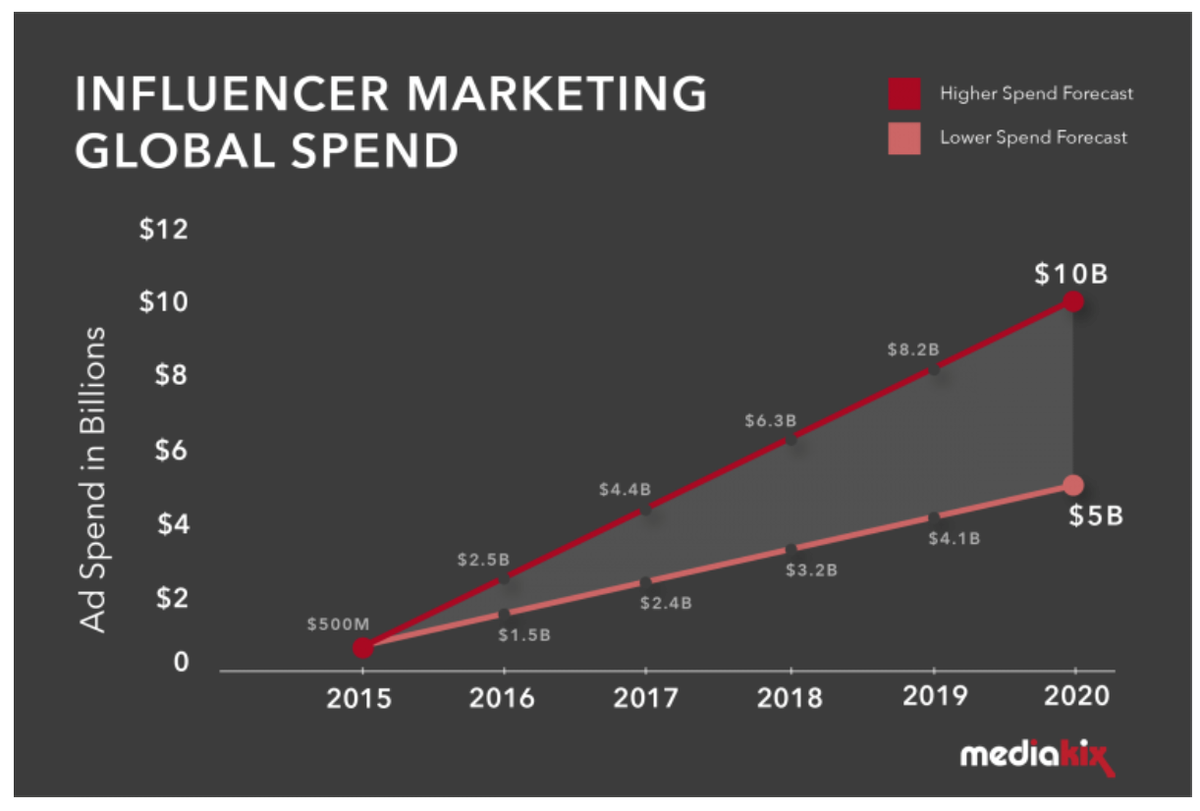
Where Do You Find Them? (Here’s a hint – INSTAGRAM)
One of the tensions of the influencer market is it is so skewed towards Instagram. So much so that when Influencers are discussed, it is often only in regards to Instagram. Don’t be fooled into thinking all your eggs have to go in an Instagram basket. YouTube, Pinterest, Facebook, Linkedin, Snapchat, Twitter and Medium all have their own sets of Influencers, and if you want to use Influencers to connect with your people, it is important to firstly be aware where the majority of your customers and potential customers are. If they are on Instagram – hurrah! If they are elsewhere, incorporate the Influencers whose opinion matters on those channels into your strategy. Having said that, in this Factsheet I’ll often refer to Instagram as it is one of the bigger players when it comes to the establishment and regulation of the Influencer industry. With 800 million active users, it’s clear why Instagram has become the platform of choice for influencer marketing. 72% of users said they have made fashion, beauty or style-related purchases after seeing something on Instagram, demonstrating its power in the digital marketing landscape. The Exposure Co, an Australian Influencer management company released research in 2018 on Australian social media use as below.
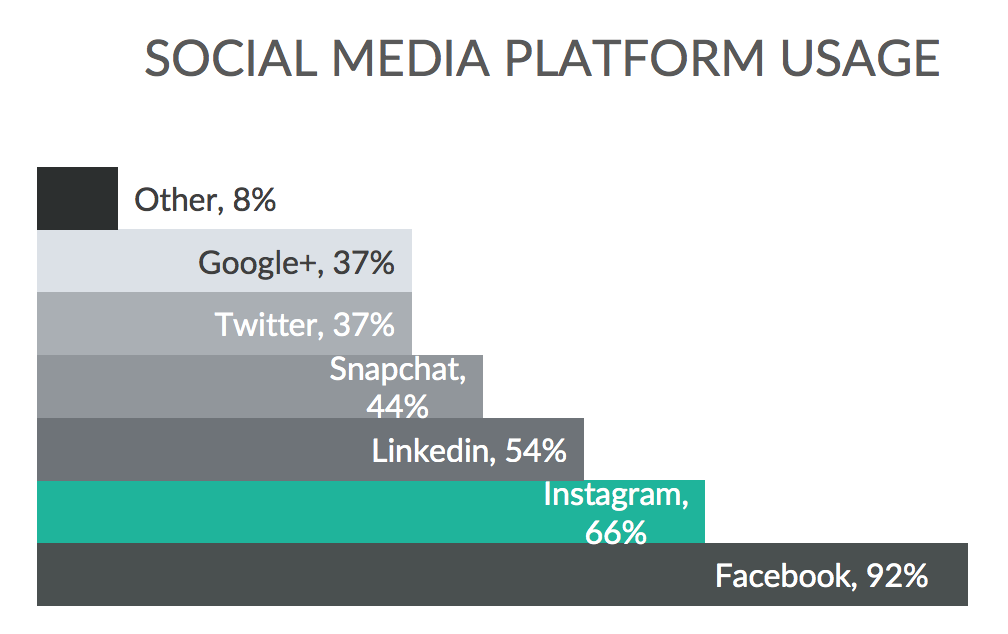
They found that influencers had a measurable impact on Australian consumer buying choices - with 39% more likely to purchase a product promoted by an influencer.
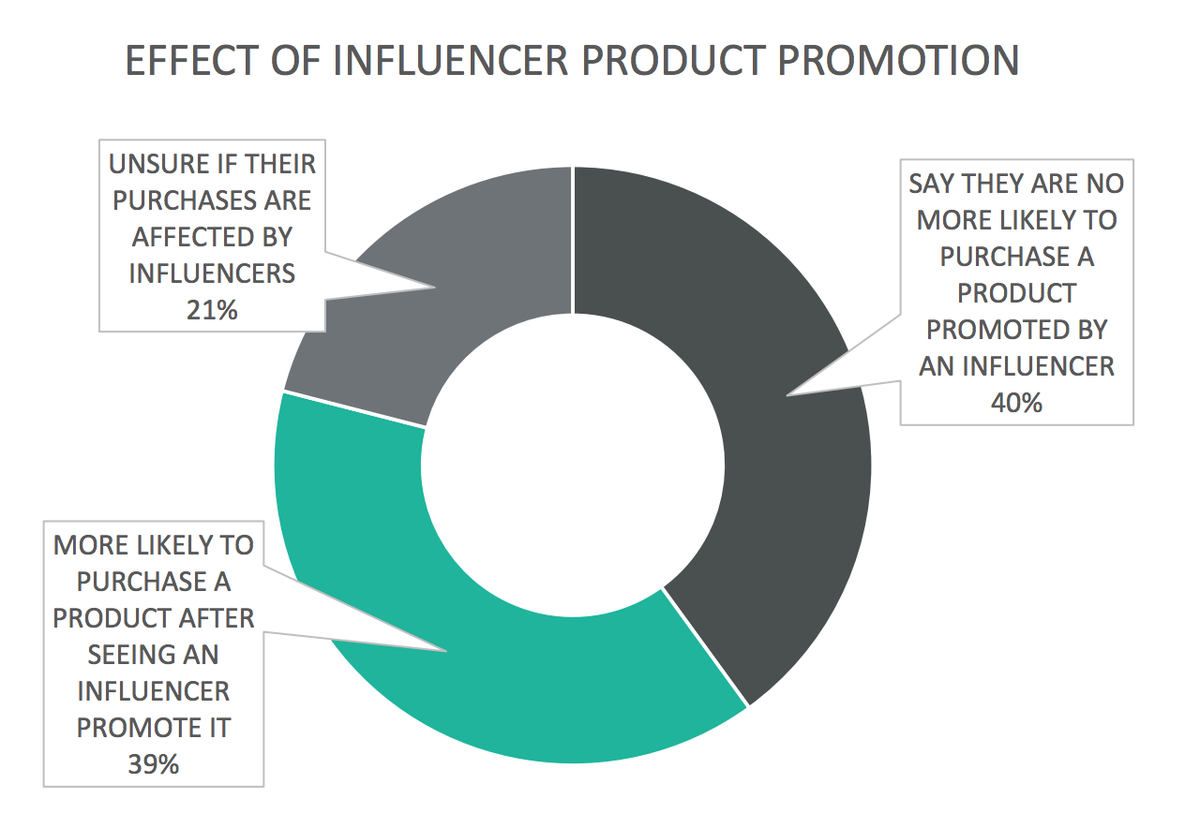
Why Does Influencer Marketing Work?
Influencer marketing allows brands to reach their target audience in a way that feels more genuine than traditional push advertising. Rather than businesses selling directly to consumers, they build relationships with influencers who can sell for them. Influencers have a strong and loyal relationship with their followers, as they share many aspects of their life with them. This leads us to feel like we know them personally, so when an influencer we like recommends something, we listen as we would if it were a friend. If it is a macro influencer, often we listen aspirationally, and want to buy the same products, or have the same experiences so we can have a moment of imagining we are sharing their lives of luxury. In the micro Influencer landscape it is more driven by the aforementioned wise friend advice feeling. What is the difference between Macro and micro Influencers you ask – I’m glad you did.
Micro Influencers vs Macro Influencers
Macro influencers are known by many people and often are a household name. These kinds of people are often celebrities or Insta famous, who have followers in the region of tens of thousands or millions. Macro influencers are often approached first hand by a brand - a business will ask them to feature their product or service on their social media profiles, with a contextual caption mentioning the brand. By using macro influencers, a brand is positioned in front of millions of people. It’s great for visibility and awareness. And it’s EXPENSIVE. Kylie Jenner, arguably the kween of macro influencers, costs $1,000,000 per post. Kylie is an extreme example, and there are plenty of macro Influencers who are not household names but are highly influential in particular demographic or sectors who charge a similar macro amount.

Micro influencers are ‘normal’ people, so to speak. Most of the time they have less than 10,000 followers, sometimes only around 1000. What’s good about that? Lots of things in terms of actually working with people who are genuinely engaged and connected with their online communities. When you have millions of followers, lots of them are bots that just automatically post, and the impact of your single post can be lost in the noise. Look at the comments in the @kyliejenner post above, most of them are not what you’d call quality engagement. Micro influencers are close to their people, have conversations with them, and more importantly have a genuine interest in what they are promoting, usually from a place of brand or values alignment.
How do you Engage an Influencer?
If you decide that Instagram influencer marketing is the right step for your business, the first thing to do is set your budget. It’s an expensive game, and with influencers charging per post and for Stories, a whole campaign can set you back a long way. It is however still comparable to major traditional advertising which is far more scattergun, so if your strategy is right and your influencer compatible, you can get some significant reach and conversion for you investment.
With a smaller budget, you will be looking for micro influencers to promote your brand. On a larger budget, you can think about bigger influencers, but try not to be fooled by vanity metrics such as number of followers, focus predominantly on genuine engagement rate per post. Once you’ve found people you think could be perfect, do your research. Ensure they have a genuine following and a trusted, loyal community. See if they’ve worked on influencer campaigns in the past and look at the kinds of products or brands they promote, this will help to inform if they would be a good fit for your brand story. Read their comments to see if your target demographic are engaging with their content. And finally, check out which type of posts they’re excelling at (ie stories, video, image posts) to help inform your campaign. Background check an influencer as you would a staff member, and check that here aren’t any horror posts that might damage your brand. Here’s a tip: avoid them if they condone or promote racism, homophobia, animal torture or human rights violations.
The next step in working with Influencers is to make contact. Micro influencers are likely to manage themselves, so contact them through the email on their profile or send them a direct message within Instagram. Some micro influencers will be happy to get product in return for influencing. Others may want product and some cash payment. If you’re looking at a larger influencer, they will probably have an agency who manage their campaign requests – this is typically listed in their bio. When approaching agencies, ask for the influencer’s rate card and explain your brand and the campaign brief you have in mind. Go into as much detail as possible (for example your budget, how many posts, the type of content etc) in order to best manage expectations on both side of the collaboration.
Your influencer relationships are partnerships. Remember that they know what their followers engage with best, and to trust them in the content creation process. Similarly, you know your products and/or service and your brand values – having an alignment is critical to make sure that your investment in their content creation and reach lands.
What Businesses Benefit?
The type of businesses that benefit from Influencer marketing are ones that are looking to do a large part of their customer engagement on social media, and more specifically Instagram or YouTube where the largest Influencer engagement exits. There really isn’t a specific type of business that most benefits, as everything and everyone that is a brand for sale benefits from a trusted, popular, third party endorser telling the world how great you or your product is. And the thing with Influencers are, especially micro influencers, they are unlikely to endorse your product if they hate it, or if it isn’t really aligned with their values, as they are putting their name to it and usually their face in a much more intimate way through their social communities. The question is better phrased as "will your business and brand benefit" – and if so, what are you looking to achieve from using an Influencer, and how will you measure the return on investment to your business. The chart below from The Exposure Co research shows the most popular brand categories followed on all social media channels in Australia, which gives you an idea of where influencers are most powerful. But as Rand Fishkin from SparkToro says
“In any given field, for any given brand, there are numerous channels and mediums that influence potential buyers and amplifiers. Sometimes, Instagram is the biggest one. Often, it’s not. The worst part isn’t just that “influencer marketing” has come to mean this very limited thing, but that the language and focus have taken marketing attention away from every other source of influence.”
So if you are a plumber or sparky, and you have an idea for a campaign, and know an influencer who has a following of your key demographic, go for it – and the good news is that you are in a category that isn’t saturated with influencers posts, so yours will stand out.
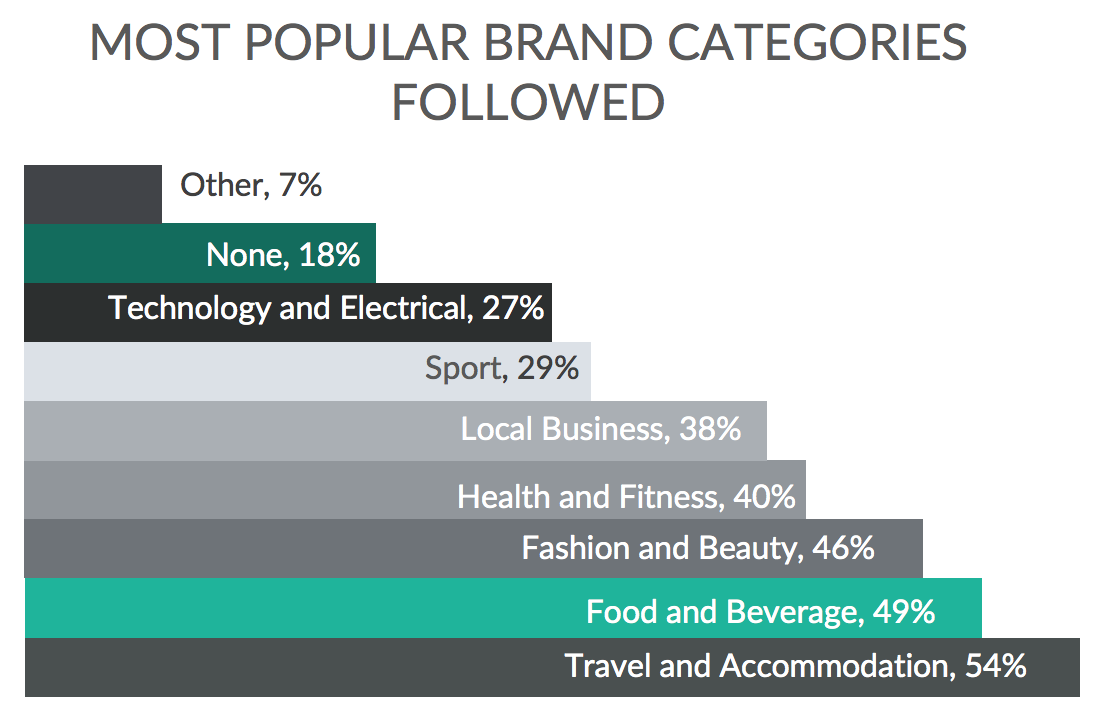
Measuring the ROI on Influencers
Influencer marketing return on investment is yet to achieve clear definition within this still relatively new sector of digital marketing. Kind of like when Facebook first started using advertising and boosted posts, back then, it was a tricky thing to measure, now, the metrics are better and easier to track. Influencer marketing is still in the murky stage, and recent reports estimate that around 85% of businesses don’t feel they can accurately measure their investment. As investment continues to rise to the kind of eye watering numbers that are being suggested will be spent on Influencers, it’s inevitable that stakeholder demand for budget justification will increase in kind.
Like most things digital, traditional advertising metrics and values, which are often applied to measure the ROI of influencer marketing, are not fit for purpose. Applying this type of data ultimately involves trying to make a new and versatile marketing technique fit into an outdated and rigidly formulaic metric.
Measurements
This breadth of opportunity within influencer marketing is huge for brands; across sales and lead generation, brand awareness, amplification and alignment, as well as content creation – ensuring that it is impractical to solely measure success based on one measurement across the board. Instead, any form of benchmarking ROI needs to be individually assigned, with value attributed on a ‘cost per’ basis, whether that is cost per follower, cost per engagement, cost per lead or cost per sale.
Sales + Links
Measuring sales is certainly the most direct objective in terms of gauging value and is the closest benchmark that can be attributed to ROI. Value can only really be captured for a fraction of those purchases, where a customer buys as a direct reaction from the influencer campaign, and so consideration needs to be taken for those who purchase later or are influenced by the campaign but don’t purchase through the campaign link.
Discount Codes + Collaboration
Although less sophisticated, discount codes attributed to an influencer can often provide a closer representation of direct ROI, as the customer is likely to be incentivised to link to the campaign via a discount achieved through use of a code. Similarly, a brand collaboration with an influencer can clearly be benchmarked against non-influencer-inspired products to measure success.
Data Capture + KPIs
Lead generation objectives, when executed fully, can also provide valuable and visible evidence on the effect that an influencer campaign can bring to a brand. Whether collecting data through email sign-ups or data-capture forms, these can be combined with particular metrics to understand how many sets of data have come directly from the effort of an influencer.
Sales aren’t the only way that influencer marketing is utilised and often objectives are more holistic; concerned with a brand’s long-term goals rather than just short-term sales. Perhaps this is where the true sweet spot of influencer marketing lies. These goals, such as brand awareness and perception, or even content collaboration, are less straightforward to prove ROI, but should be set as bespoke KPIs and a cost per achievement on completion.
Brand Awareness
In terms of brand awareness, measuring growth in traffic, visibility or social followers over a set period of time is an easy and manageable metric to gauge success, and similarly engagement can be used to benchmark whether influencers are delivering bang for their buck. To attribute direct results within conversation, it’s useful to attribute a hashtag to each campaign as a clear way of isolating content that is performing as part of this activation.
Whichever metric is used, it needs to be one that is right for the individual brand and at a cost which the individual team is comfortable with for a campaign.
Transparency in Posting
As the Influencer market has grown, both in size and in dollar value, so too have there been calls for more transparency by customers and those whose brands are being promoted. Consumers have felt misled as a result of being unaware somebody they follow was getting paid to recommend certain products, and brands don’t want to be stung by getting labelled as being sneaky. Instagram created their official ‘Paid partnership’ tag, which sits above a post to inform users that a brand is collaborating with that influencer. While on some levels this takes away from the authenticity that made Instagram influencer marketing so successful, influencers also feel a loyalty to let their followers know they’ve earned money from a post. Influencers now have to use this tag, and if they don’t, get slammed for it. No one wants that. Hashtags such as #ad and #spon have become standard in a paid post caption, in order to distinguish the sponsorship deals from ‘genuine’ recommendations. It’s not cool according to the Instagram paid partnership guidelines to bury those hashtags in a #hashtag #string #like #this #where #the #ad #and #spon #get #lost. #notcool
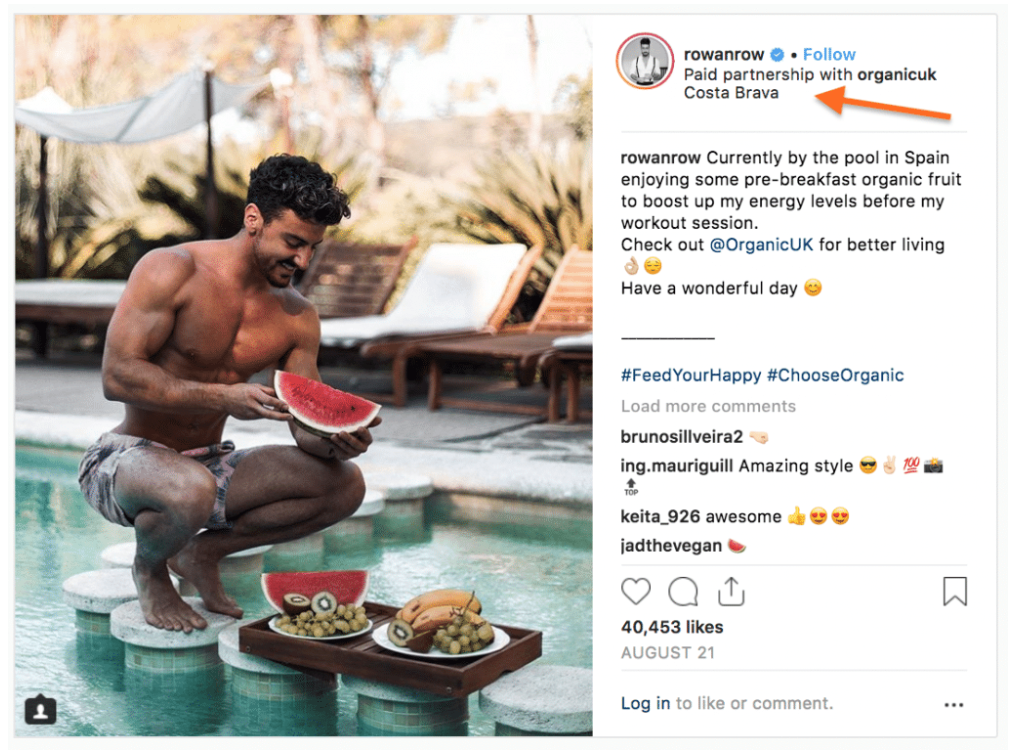
Image via AgoraPulse
‘Oh Hey Kylie, it’s me’ [insert brand name here]
Should you use Influencers? Sure, why not? But like everything we say in the Digital Ready Program (cue repetitive messaging) that usage should be a clear choice BECAUSE it fits with your strategy, your customers, what they need and what they respond to. It’s easy to get it very wrong with Influencers (listen to the Digital Ready Program Podcast on Francesca to hear their story) so take it slow, do your research, build a relationship with your Influencer, and undertake a couple of small and inexpensive posts to measure response. If you are building traction, then proceed with caution. For a Tasmanian audience, a micro influencer is a better scenario, unless you have a global product and the budget to be playing with the A listers. Influencers are undoubtedly here to stay, and are already a strong player in the digital marketing mix. As they grow and mature as a sector, the ROI will get clearer, and the playing field less maze like.
For more on Influencers, listen to the Digital Ready Program Podcast on Influencers , and read the blog . Have an experience with an influencer you’d like to share? Head to our Facebook page and join the conversation with your story.

